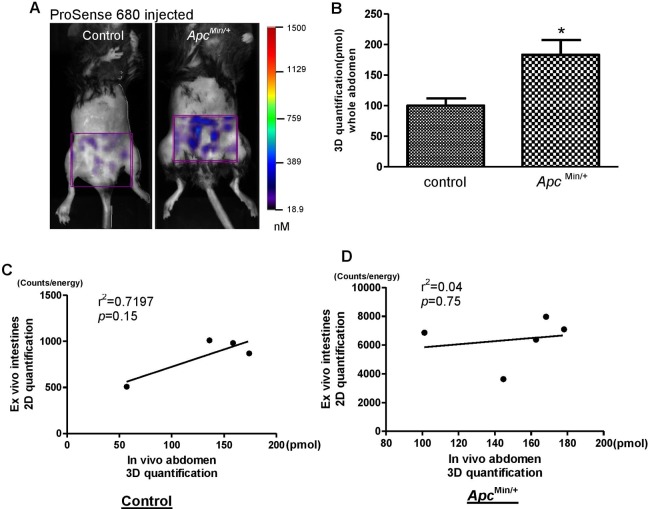Figure 5.
In vivo 3-dimensional (3D) fluorescence imaging using ProSense 680 activatable probe can detect abdominal tumor load in Apc Min/+ mice. A, Representative 3-D in vivo fluorescence images of Apc Min/+ mice and nontumor control mice injected with ProSense 680 probe. Region of interest (ROI) in purple is placed in abdominal area. B, Three-dimensional quantification results in the abdominal area indicate significant higher fluorescence signals in Apc Min/+ mice than nontumor control animals. Data are expressed as mean ± standard error (SE). n = 4 to 5/group. *P < .05 versus nontumor control mice. C and D, Linear regression analysis on ex vivo 2-D whole intestine fluorescence signal intensity and in vivo 3-D abdominal fluorescence signal intensity suggests no significant correlation in control mice (C) or Apc Min/+ mice (D).

